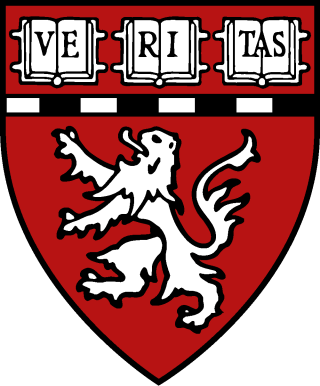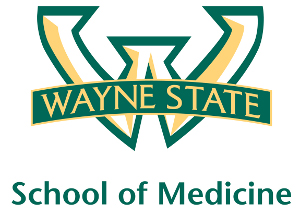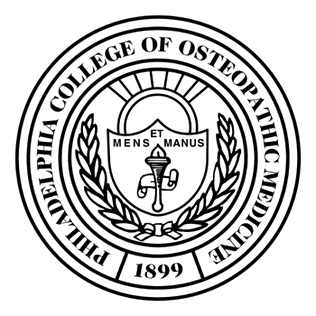Related Research Articles

Harvard Medical School (HMS) is the medical school of Harvard University and is located in the Longwood Medical Area in Boston, Massachusetts. Founded in 1782, HMS is one of the oldest medical schools in the United States. HMS is affiliated with several teaching hospitals in the Boston area. Affiliated teaching hospitals and research institutes include Dana–Farber Cancer Institute, Massachusetts General Hospital, Brigham and Women's Hospital, Beth Israel Deaconess Medical Center, Boston Children's Hospital, McLean Hospital, Cambridge Health Alliance, The Baker Center for Children and Families, and Spaulding Rehabilitation Hospital.

Baylor College of Medicine (BCM) is a medical school and research center in Houston, Texas, within the Texas Medical Center, the world's largest medical center. BCM is composed of four academic components: the School of Medicine, the Graduate School of Biomedical Sciences; the School of Health Professions, and the National School of Tropical Medicine.

The Emory University School of Medicine is the graduate medical school of Emory University and a component of Emory’s Robert W. Woodruff Health Sciences Center. Emory University School of Medicine traces its origins back to 1915 when the Atlanta Medical College, the Southern Medical College (1878), and the Atlanta School of Medicine merged.

Oklahoma State University Center for Health Sciences (OSU-CHS) is a public medical school in Tulsa, Oklahoma. It also has a branch campus in Tahlequah, Oklahoma. Founded in 1972, OSU-CHS is part of the Oklahoma State University System. OSU-CHS offers a Doctor of Osteopathic Medicine (D.O.) and over fifteen other different graduate degrees.
NYU Grossman School of Medicine is a medical school of New York University (NYU), a private research university in New York City. It was founded in 1841 and is one of two medical schools of the University, the other being the NYU Grossman Long Island School of Medicine. Both are part of NYU Langone Health,an academic medical center named after Kenneth Langone, the investment banker and financial backer of The Home Depot.

The Tufts University School of Medicine is the medical school of Tufts University, a private research university in Massachusetts. It was established in 1893 and is located on the university's health sciences campus in downtown Boston. It has clinical affiliations with numerous doctors and researchers in the United States and around the world, as well as with its affiliated hospitals in both Massachusetts, and Maine.
Charles R. Drew University of Medicine and Science is a private university in Willowbrook, California, focused on health sciences. It was founded in 1966 in response to inadequate medical access within the Watts region of Los Angeles, California. The university is named in honor of Charles R. Drew.

SUNY Downstate Medical Center is a public medical school and hospital in Brooklyn, New York. It is the southernmost member of the State University of New York (SUNY) system and the only academic medical center for health education, research, and patient care serving Brooklyn's 2.5 million residents. As of Fall 2018, it had a total student body of 1,846 and approximately 8,000 faculty and staff.

The Wayne State University School of Medicine (WSUSOM) is the medical school of Wayne State University, a public research university in Detroit, Michigan. It enrolls more than 1,500 students in undergraduate medical education, master's degree, Ph.D., and M.D.-Ph.D. WSUSOM traces its roots through four predecessor institutions since its founding in 1868.

Philadelphia College of Osteopathic Medicine (PCOM) is a private medical school with its main campus in Philadelphia, Pennsylvania, and additional locations in Suwanee, Georgia and Moultrie, Georgia.
The University of Illinois College of Medicine offers a four-year program leading to the MD degree at four different sites in Illinois: Chicago, Peoria, Rockford, and formerly Urbana–Champaign. The Urbana–Champaign site stopped accepting new students after Fall 2016 to make room for the newly established Carle Illinois College of Medicine.
Drexel University College of Medicine is the medical school of Drexel University, a private research university in Philadelphia, Pennsylvania. The medical school represents the consolidation of two medical schools: Hahnemann Medical College, originally founded as the nation's first college of homeopathy, and the Woman's Medical College of Pennsylvania, the first U.S. medical school for women, which became the Medical College of Pennsylvania when it admitted men in 1970; these institutions merged in 1993, became affiliated with Drexel University College of Medicine in 1998, and were fully absorbed into the university in 2002. With one of the nation's largest enrollments for a private medical school, Drexel University College of Medicine is the second most applied-to medical school in the United States. It is ranked no. 83 in research by U.S. News & World Report.
The University of Cincinnati Academic Health Center (AHC) is a collection of health colleges and institutions of the University of Cincinnati, Cincinnati, Ohio. It trains health care professionals and provides research and patient care. AHC has strong ties to UC Health, which includes the University of Cincinnati Medical Center and West Chester Hospital.

Howard University Hospital, previously known as Freedmen's Hospital, is a major hospital located in Washington, D.C., built on the site of Griffith Stadium, a former professional baseball stadium that served as the home field of the Washington Senators. The hospital has served the African American community in the Washington metropolitan area since its 1862 founding.

The State University of New York Upstate Medical University is a public medical school in Syracuse, New York. Founded in 1834, Upstate is the 15th oldest medical school in the United States and is the only medical school in Central New York. The university is part of the State University of New York (SUNY) system.

Boston University Chobanian & Avedisian School of Medicine (CAMED), formerly known as Boston University School of Medicine, is the medical school of Boston University, a private research university in Boston. It was founded in 1848. The medical school was the first institution in the world to formally educate female physicians. Originally known as the New England Female Medical College, it was subsequently renamed Boston University School of Medicine in 1873, then Chobanian & Avedisian School of Medicine in 2022. In 1864, it became the first medical school in the United States to award an M.D. degree to an African-American woman.

The Faculty of Medicine at Dalhousie University, also known as Dalhousie Medical School, is a medical school and faculty of Dalhousie University in Halifax, Nova Scotia, Canada.
The University of Tennessee College of Medicine is one of six graduate schools of the University of Tennessee Health Science Center (UTHSC) in downtown Memphis. The oldest public medical school in Tennessee, the UT College of Medicine is a LCME-accredited member of the Association of American Medical Colleges (AAMC) and awards graduates of the four-year program Doctor of Medicine (MD) degrees. The college's primary focus is to provide practicing health professionals for the state of Tennessee.
The New Freedmen's Clinic is a free student-run health care clinic affiliated with Howard University Hospital (HUH) and Howard University College of Medicine (HUCM). It gets its name from HUH's original name - Freedmen's Hospital. It is currently located in the heart of Washington, DC, within HUH.

AdventHealth University (AHU) is a Seventh-day Adventist institution specializing in healthcare education that is located in Orlando, Florida; Denver, Colorado; and online. It is associated with AdventHealth, which is operated by the Seventh-day Adventist Church. It is a part of the Seventh-day Adventist education system, the world's second largest Christian school system. The physical facilities are located next to AdventHealth Orlando and Centura Health in Denver. The university offers over 20 undergraduate and graduate degrees from associate to doctorate level, including online and post-baccalaureate certificates.
References
- ↑ "Overview and History". Howard University. Archived from the original on 2013-06-22. Retrieved 2010-02-15.
- 1 2 3 4 5 6 "A short history". Howard University. Archived from the original on 2013-08-06. Retrieved 2010-02-15.
- ↑ "HUMAA". humaa.com. Retrieved 24 March 2015.
- ↑ "Howard University To Receive $32.8 Million Bloomberg Donation To Support Black Doctors". Archived from the original on 2020-09-05. Retrieved 2020-09-05.
- ↑ "The First Black Woman Dean of the Howard - ProQuest". www.proquest.com. Retrieved 2024-04-16.
- ↑ "Simulation Center". howard.edu. Archived from the original on 17 May 2016. Retrieved 24 March 2015.
- ↑ "LSHSL: Louis Stokes Health Sciences Library: Home". Louis Stokes Health Sciences Library.
- ↑ "Georgetown-Howard Universities Home | GHUCCTS". georgetownhowardctsa.org. Retrieved 28 March 2020.
- ↑ Obisesan, Thomas O.; Gillum, Richard F.; Johnson, Stephanie; Umar, Nisser; Williams, Deborah; Bond, Vernon; Kwagyan, John (2012). "Neuroprotection and Neurodegeneration in Alzheimer's Disease: Role of Cardiovascular Disease Risk Factors, Implications for Dementia Rates, and Prevention with Aerobic Exercise in African Americans". International Journal of Alzheimer's Disease. 2012: 568382. doi: 10.1155/2012/568382 . PMC 3345220 . PMID 22577592.
- ↑ Mellman, Thomas A. (December 2019). "A new meta-analysis of sleep findings in PTSD, toward integration and coherence". Sleep Medicine Reviews. 48: 101220. doi:10.1016/j.smrv.2019.101220. PMID 31678661. S2CID 207898491.
- ↑ http://www.howard.edu/newsroom/releases/2013/20130826HowardUniversityProvidesMedicalAidtoThousandsinHaiti.html.
{{cite web}}: Missing or empty|title=(help) - 1 2 "History | Howard University College of Medicine". medicine.howard.edu. Retrieved 2024-04-17.